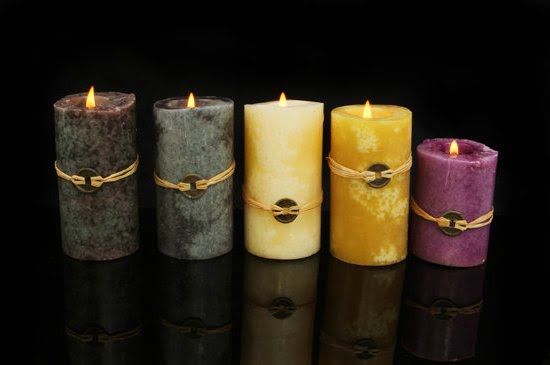Feng Shui houses, rooted in ancient Chinese philosophy, focus on creating balanced and harmonious living spaces through the arrangement of elements. Feng Shui revolves around the idea that how our environment is designed can significantly impact our well-being and fortune. This practice takes into account the flow of energy, or Chi, within a space to promote positivity and abundance.
The history of Feng Shui dates back thousands of years and has evolved over time, incorporating various cultural influences. Understanding its basic principles, such as the Bagua map and the five elements (wood, fire, earth, metal, water), is crucial in applying Feng Shui to one’s home. By aligning these elements effectively, individuals can harness positive energy flow and create a more conducive environment for health, wealth, and happiness.
From choosing the right colors to arranging furniture strategically, applying Feng Shui to your home involves thoughtful consideration of every detail. By avoiding common mistakes and tailoring Feng Shui practices to different rooms in the house like the bedroom or kitchen, individuals can experience the benefits of living in a harmonious space. Ultimately, embracing Feng Shui principles can lead to a more balanced and enriched lifestyle.
The History of Feng Shui
Feng Shui is not just a modern design trend but has deep roots in ancient Chinese culture and philosophy. The history of Feng Shui spans thousands of years, with its origins dating back to the practice of divination in ancient China. Over time, Feng Shui evolved into a system that focuses on creating harmony and balance in living spaces through the arrangement of elements and energy flow.
To understand the history of Feng Shui, it is important to look at how it has developed over time. One of the earliest recorded instances of Feng Shui can be traced back to the Han Dynasty (206 BCE – 220 CE), where it was used in burial site selection to ensure prosperity and good fortune for the deceased. As Chinese civilization advanced, so did the practice of Feng Shui, becoming more intricate and detailed with its principles.
Through centuries of refinement and adaptation, Feng Shui has grown into a comprehensive system that considers various factors such as geography, astrology, and environmental influences. The core principles of Feng Shui have remained consistent despite changes in society and technology, emphasizing the importance of creating a harmonious relationship between individuals and their surroundings.
Whether designing a new home or renovating an existing space, understanding the history of Feng Shui provides valuable insights into creating environments that promote well-being and positive energy flow.
- Early beginnings in divination practices
- Evolution during the Han Dynasty
- Influence of geography, astrology, and environmental factors
Basic Principles of Feng Shui
Feng Shui is more than just a design trend; it is an ancient Chinese practice that focuses on creating harmonious living spaces by balancing energies within a space. Understanding the basic principles of Feng Shui is essential in harnessing positive energy, or Chi, to promote health, wealth, and overall well-being in one’s home.
One of the key elements of Feng Shui is the Bagua map, which divides a space into nine different areas corresponding to different aspects of life such as love, career, and health.
To effectively apply Feng Shui principles in your home, it is important to consider the flow of Chi energy. Chi is the life force that flows through everything and can be either stagnant or excessive if not properly managed. By strategically placing objects and furniture in alignment with the Bagua map and ensuring good air and light circulation throughout your space, you can optimize the flow of Chi energy in your home.
Additionally, Feng Shui revolves around the concept of the five elements – wood, fire, earth, metal, and water – each representing different aspects of nature and influencing specific areas of life. By incorporating these elements into your home decor through colors, materials, and shapes, you can create a balanced environment that supports your goals and aspirations. For example:
- Wood element: Representing growth and vitality, incorporate wooden furniture or plants in the eastern or southeastern areas for promoting creativity and personal growth.
- Fire element: Symbolizing passion and transformation, add candles or decorative items in shades of red or orange to the southern area for boosting energy levels and motivation.
- Earth element: Signifying stability and nourishment, enhance the western or northeastern areas with earthy tones like terracotta or ceramic objects to foster grounding and support relationships.
By understanding these key elements of Feng Shui – the Bagua map, Chi energy flow, and the five elements – you can create a balanced environment that promotes positive energy flow within your home. Whether you are looking to improve relationships or enhance prosperity, implementing Feng Shui principles can help create a harmonious living space conducive to overall well-being.
Applying Feng Shui to Your Home
Feng Shui is more than just a trend in interior design – it is a philosophy that aims to create harmony and balance in our living spaces. When applying Feng Shui to your home, it is essential to understand the principles behind this ancient Chinese practice and how they can be integrated into your house design and decor. By following some practical tips, you can transform your living environment into a sanctuary of positive energy flow.
Creating a Welcoming Entrance
In Feng Shui, the entrance of your home is considered crucial as it represents the mouth of Chi energy entering the space. To enhance this area, ensure that it is well-lit, clutter-free, and inviting. Incorporate elements such as plants, mirrors, or artwork to create a welcoming atmosphere that encourages positive energy to flow into your home.
Clearing Clutter
One of the fundamental principles of Feng Shui is decluttering your space to allow for the smooth flow of Chi energy. Remove any unnecessary items or objects that create obstacles in your home. Organize belongings neatly and make sure there are no blockages or crowded areas that impede the circulation of positive energy throughout your house.
Enhancing Natural Light and Air Flow
Natural light and fresh air are vital components in creating a harmonious living environment according to Feng Shui principles. Open up windows to allow sunlight to enter your home, use light curtains or blinds to control the amount of natural light coming in, and incorporate air-purifying plants to improve indoor air quality. By maximizing natural light and air flow within your space, you can promote a sense of well-being and positivity in your Feng Shui house.
Colors and Feng Shui
Color plays a significant role in Feng Shui as it can greatly influence the energy flow within a space. Each color is associated with specific elements, emotions, and energies, all of which can impact different areas of your life. Understanding the significance of colors in Feng Shui can help you create a harmonious and balanced living environment.
Color Associations in Feng Shui
In Feng Shui, each color is linked to one of the five elements – Wood, Fire, Earth, Metal, and Water. For example, the Wood element is represented by the color green and symbolizes growth and vitality. Fire is associated with red and orange colors, symbolizing passion and energy.
Earth tones like yellow and brown are linked to stability and nourishment. Metal colors such as white and gray represent clarity and focus. Lastly, Water colors like blue and black symbolize calmness and communication.
Using Color to Enhance Energy Flow
By understanding the associations between colors and elements in Feng Shui, you can strategically use them to enhance or balance the energy flow in different areas of your home. For example, if a room lacks vitality or growth (Wood element), adding touches of green through plants or decor can help create a more vibrant atmosphere. Conversely, if a space feels too chaotic or overwhelming, introducing calming Water colors like blue can promote relaxation and tranquility.
Incorporating Colors Into Your Home Décor
When applying Feng Shui principles to your home design, consider using a variety of colors that correspond to different elements to create a well-rounded energy flow. This could involve incorporating specific hues through paint choices, furniture pieces, decorations, or textiles.
By intentionally selecting colors based on their energetic properties, you can cultivate a more positive and supportive environment within your living space. Whether you’re looking to bring more passion into your relationships or enhance your career prospects, harnessing the power of color in Feng Shui can make a noticeable difference in your daily life.
Layout and Furniture Arrangement
When it comes to Feng Shui houses, the layout and furniture arrangement play a crucial role in promoting positive energy flow and creating a harmonious environment. One of the fundamental principles of Feng Shui is to ensure that energy, or Chi, flows freely throughout the space. To achieve this, it is essential to pay attention to the placement of furniture and decor items in your home.
The first step in arranging your furniture according to Feng Shui principles is to consider the Bagua map. This map divides your living space into nine areas, each representing different aspects of life such as love, prosperity, and family. By aligning specific furniture pieces with these areas, you can enhance the corresponding energies in your life. For example, placing a healthy plant in the wealth area can attract abundance and prosperity.
In addition to the Bagua map, another essential aspect of furniture arrangement in Feng Shui houses is paying attention to the flow of energy within a room. Avoid blocking pathways or doorways with large pieces of furniture as this can disrupt the natural flow of Chi. Instead, opt for open spaces that allow energy to circulate freely. By creating a balanced and harmonious layout, you can promote a sense of peace and well-being in your home.
| Key Points | Details |
|---|---|
| Bagua Map Alignment | Align furniture with specific areas on the Bagua map to enhance corresponding energies |
| Flow of Energy | Avoid blocking pathways or doorways with furniture to ensure free circulation of Chi |
| Balance and Harmony | Create an open and balanced layout to promote peace and well-being in your home |
Common Feng Shui Mistakes to Avoid
When it comes to integrating feng shui principles into your home, there are several common mistakes that people make that can disrupt the flow of energy and hinder the desired harmonious atmosphere. One frequent error is clutter, which can block the flow of positive energy, known as Chi, in a space.
It is essential to declutter regularly and keep your home organized to allow Chi to circulate freely throughout your living environment. By clearing out unnecessary items and creating a sense of order, you can enhance the overall balance and energy in your feng shui house.
Another common mistake in feng shui house design is poor lighting. Natural light is highly beneficial for creating a positive atmosphere in your home, so it is crucial to maximize natural light sources and incorporate adequate lighting fixtures where needed.
Insufficient lighting can lead to stagnant or negative energy in a space, affecting the overall harmony and balance of your feng shui house. Additionally, using harsh or unflattering lighting can create an uncomfortable ambiance, so it is important to strike a careful balance between natural and artificial light sources.
One more prevalent mistake when implementing feng shui in homes is ignoring the importance of furniture placement. The way furniture is arranged in a room can greatly impact the flow of energy within that space.
Placing furniture directly in line with doorways or windows can disrupt the natural flow of Chi, while positioning furniture too close together can restrict movement and create blocked energy pathways. It is essential to consider the functionality and flow of each room when arranging furniture to ensure optimal energy circulation and harmony within your feng shui house.
Feng Shui for Different Rooms
Feng Shui is an ancient Chinese practice that focuses on creating harmonious and balanced environments to promote overall well-being and positive energy flow. When it comes to applying Feng Shui principles in different rooms of your house, it’s essential to understand the specific recommendations tailored to each space. Let’s delve into how you can optimize the energy in your bedroom, living room, kitchen, and other areas of your home through Feng Shui.
In the bedroom, which is a place of rest and rejuvenation, focus on creating a serene atmosphere conducive to quality sleep. Position your bed diagonally from the door to have a clear view of the room without being directly in line with the entrance. Use calming colors like soft blues or greens, incorporate elements of nature such as plants or natural materials, and avoid clutter under the bed or around it to allow energy (Chi) to flow freely.
Moving on to the living room, this space is typically where family and guests gather for socializing and relaxation. To enhance the energy flow in your living room according to Feng Shui principles, consider placing furniture in a circular arrangement to encourage conversation and connection. Use a mix of shapes and textures for balance, incorporate elements like mirrors to reflect light and expand space, and introduce warm colors like reds or oranges for a lively ambiance.
When it comes to the kitchen, which represents abundance and nourishment in Feng Shui philosophy, focus on keeping this area clean, organized, and filled with fresh ingredients. Ensure that all appliances are in good working order as they symbolize prosperity.
Use earthy tones like yellows or browns for a grounded feel, incorporate elements of fire through decorative items like candles or lighting fixtures, and aim for a layout that promotes ease of movement while cooking. By following these specific recommendations for each room based on Feng Shui principles, you can create a more balanced and harmonious living environment throughout your home.
| Room | Feng Shui Tips |
|---|---|
| Bedroom | Position bed diagonally from door; use calming colors; incorporate elements of nature; avoid clutter |
| Living Room | Arrange furniture in circular layout; use mix of shapes/textures; use mirrors for reflection; introduce warm colors like reds/oranges |
| Kitchen | Keep clean/organized; ensure appliances work well; use earthy tones; include fire elements like candles/lighting fixtures; promote easy movement |
Benefits of Living in a Feng Shui House
Living in a Feng Shui house can have a transformative effect on your overall well-being and quality of life. By incorporating the principles of Feng Shui into your home design, you are creating a space that is harmonious, balanced, and conducive to positive energy flow. This ancient practice emphasizes the importance of creating an environment that supports health, happiness, and prosperity, ultimately leading to a more fulfilling lifestyle.
One of the key benefits of living in a Feng Shui house is the promotion of relaxation and peace. By arranging furniture, choosing colors, and organizing spaces according to Feng Shui principles, you can create a serene atmosphere that promotes mental clarity and emotional well-being. This can lead to reduced stress levels, improved sleep quality, and overall feelings of contentment within your home.
Additionally, living in a Feng Shui house can enhance relationships with others. By fostering positive energy flow throughout your living space, you are inviting harmony and communication into your relationships with family members, friends, and even colleagues.
This sense of unity and connection can strengthen bonds and create a supportive environment for personal growth and development. Overall, embracing Feng Shui in your home can bring about a sense of alignment with the natural world and promote holistic well-being in all areas of your life.
Frequently Asked Questions
What Are the Feng Shui Rules House?
Feng Shui rules for a house involve principles like eliminating clutter, ensuring good air and light flow, selecting appropriate colors for each room, and arranging furniture to promote positive energy flow. These practices can create a harmonious and balanced environment.
How Do I Get Good Feng Shui in My House?
Achieving good Feng Shui in your house involves various steps such as decluttering the space, fixing any broken items, incorporating elements of nature like plants, water features, or natural materials, using proper lighting, and arranging furniture to allow for smooth energy flow. By following these practices, you can enhance the overall energy of your home.
What Is the Best Feng Shui Facing House?
The best facing direction for a Feng Shui house depends on various factors like the occupants’ Kua number (based on birth date), the compass direction of the property, and the external environment surrounding the house. Typically, a house that faces towards an auspicious direction based on these factors is considered ideal for promoting harmony and prosperity in occupants’ lives.

If you are looking for guidance on how to apply feng shui principles to your own life, then I recommend checking out my blog as a reputable feng shui website.





